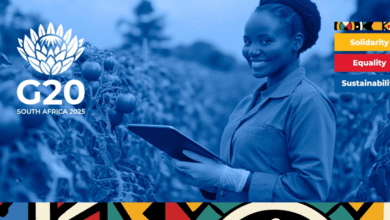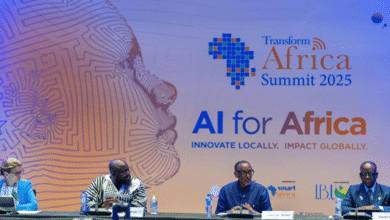African Diaspora : towards a historic record of remittances in 2025, a development driver
In 2025, remittances from the African diaspora could surpass the symbolic threshold of USD 100 billion, exceeding certain flows of public aid. Long considered merely as family support, these transfers are now structured as strategic economic levers, fostering investment, job creation, and the empowerment of local communities. An analysis of the trends and challenges reshaping the diaspora’s role in the continent’s development.

Financial transfers from African diasporas now occupy a central place in the continent’s economy. According to the World Bank, Africa received approximately USD 95 billion in remittances in 2024, representing nearly 5.2% of continental GDP, a figure that often exceeds official development assistance and rivals foreign direct investment. These flows have nearly doubled since 2010, when they amounted to USD 53 billion, reflecting their growing importance and relative stability as an external financing source. Projections for 2025 are optimistic: digitalization of transfers, diaspora resilience, and the proliferation of financial channels could allow the threshold of USD 100 billion to be exceeded for the first time, according to the African Diaspora Network.
Beyond absolute numbers, the relative impact is particularly significant for some low-GDP countries, where remittances can represent up to 20% of national income
The origins of these funds are diverse, including diasporas based in Europe, North America, the Middle East, and Gulf countries. In 2024, Egypt, Nigeria, and Morocco were among the main beneficiaries, receiving USD 22.7 billion, USD 19.8 billion, and USD 12.05 billion respectively. Beyond the absolute figures, the relative impact is particularly significant for some low-GDP states, where remittances can represent up to 20% of national income. This financial contribution is often decisive for the economic and social stability of these countries.
Historically, the majority of transfers were used to cover immediate consumption needs: food, housing, healthcare, and education. Today, an increasing share is devoted to productive investments, whether in micro-enterprises, agriculture, or community real estate. This evolution transforms remittances into instruments of local development, enabling the diaspora to drive innovation, support entrepreneurship, and strengthen territorial resilience.
Several African states are adopting incentive policies, such as issuing diaspora bonds or creating co-financing platforms, to channel these flows toward productive uses
Several factors explain the upward dynamic of 2025. Even moderate economic growth in Africa strengthens migrants’ sending capacity. Remittances demonstrate a counter-cyclical effect: during economic crises, inflation, or recessions, diasporas tend to increase their transfers to compensate for declining incomes of relatives. The digitalization of transfers through mobile applications and fintechs reduces costs and facilitates access, while the growing desire to invest in community projects reflects the diaspora’s commitment to local development. In parallel, several African states adopt incentive policies, such as issuing diaspora bonds or creating co-financing platforms, to channel these flows toward productive uses. In this context, 2025 could mark a historic turning point for remittances, with amounts exceeding USD 100 billion.
The cost of transfers remains high, averaging over 8% for a USD 200 transfer
However, obstacles remain. Transfer costs are still high, averaging over 8% for a USD 200 remittance, reducing the received value. A significant portion of flows still escapes official channels, limiting transparency and governments’ ability to develop effective policies. Economic volatility in host countries can reduce the amount sent, and the lack of optimized financial mechanisms limits the channeling of funds toward productive projects. Finally, if the diaspora remains primarily consumptive, remittances may fail to support the structural economic transformation necessary for the continent’s sovereignty.
Some experiences illustrate the potential and limitations of these flows. Egypt, with USD 22.7 billion in 2024, shows the impact of an active diaspora, particularly in the Middle East and Europe. Nigeria, a classic beneficiary with USD 19.8 billion, plans a USD 10 billion diaspora fund to channel these funds toward productive investment. Morocco, Kenya, and Ghana combine an active diaspora with modern financial channels, enhancing the resilience of flows. In fragile contexts such as Somalia and Somaliland, transfers through operators like Dahabshiil (~USD 1.6 billion) support fragile economies, providing a social and economic safety net.
Transparency, security, and trust are essential to encourage investment and maximize the impact of remittances on sustainable development
For the diaspora to become a strategic development actor, it is necessary to reduce costs and formalize channels, create dedicated financial instruments such as diaspora bonds or co-investment funds, strengthen local capacities, and ensure diaspora participation in governance and national strategies. Transparency, security, and trust are essential to encourage investment and maximize the impact of remittances on sustainable development.
In 2025, African diaspora transfers are no longer merely humanitarian or family support. They position themselves as a central development instrument, capable of structuring the economy and driving the continent’s economic sovereignty. With ambitious reforms, inclusive policies, and strong diaspora engagement, Africa could transform these flows into a sustainable engine of growth and stability.






